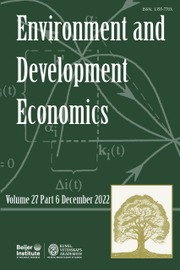Demystifying the Chinese Economy
By the late 19th century, China had degenerated into one of the world's poorest economies. Despite generations of effort for national rejuvenation, China did not reverse its fate until the market-oriented reform. Since then, China has become the most dynamic economy in the world and is likely to regain its position as the world's largest economy before 2030. Demystifying the Chinese Economy, provides insightful answers to why China was so advanced in premodern times and what caused it to become so poor for almost two centuries. It explains how China maintained stability and grew rapidly in its transition to an open, market economy. Featuring three new chapters (and five new appendices) on challenges facing China's economic development and structural reform, this new edition covers topical issues such as the origins of US-Sino trade frictions, the impact of Donald Trump's presidency, and the development of the 'Belt and Road' initiative.
- Proposes a new theoretical framework on Chinese Economy, helping readers understand Chinese economic challenges and development from a different perspective
- Explores the global impacts of China's rise
- Explains historical context for China's economic development
Reviews & endorsements
‘No one knows the Chinese economy better than Justin Lin, and there’s no one better placed to describe its essential workings. A unique perspective on the Chinese miracle from a unique perch.’ Barry Eichengreen, George C. Pardee and Helen N. Pardee Professor of Economics and Political Science, University of California, Berkeley
‘Justin Lin’s Demystifying the Chinese Economy is a tour de force. The book succeeds at many levels. It presents a broad historical perspective over two millennia of the rise, fall, and dramatic resurgence of Chinese economic power. It presents an analytically informative study of the sources of Chinese economic growth and the prospects of growth for the future. Lin formalizes the successful pragmatic Chinese approach to economic development using his insightful notion of comparative advantage-following (CAF) strategies. The book challenges many tenets of conventional neoclassical theory and shows how naive application of many of its principles had catastrophic consequences for many transition economies.’ James J. Heckman, Henry Schultz Distinguished Service Professor of Economics, 2000 Nobel Prize in Economics, University of Chicago
‘This book considers fundamental questions about the great transformation of China from a poor underdeveloped country to a global leader in modern economic growth. These are among the most important questions of our time, and Justin Lin has the best credentials to help us understand them. In this book, he offers a new and important perspective on the conditions for modern economic development in China and the world.’ Roger Myerson, Glen A. Lloyd Distinguished Service Professor of Economics, 2007 Nobel Prize in Economics, University of Chicago
‘This clear and insightful study of the origins of China’s failures and, finally, its extraordinary success will be must-reading for anyone who wants to understand Chinese development. An important book and much overdue.’ Edmund S. Phelps, McVickar Professor of Political Economy, 2006 Nobel Prize in Economics, Columbia University
Product details
December 2025Hardback
9781009209304
420 pages
229 × 152 mm
0.5kg
Not yet published - available from December 2025
Table of Contents
- Preface to the second edition
- Preface to the first edition
- 1. Opportunities and challenges in China's economic development
- 2. Why the scientific and industrial revolutions bypassed China
- 3. The great humiliation and the socialist revolution
- 4. The comparative advantage–defying, catching-up strategy and China's traditional economic system
- 5. Enterprise viability and factor endowments
- 6. The comparative advantage–following development strategy
- 7. Rural reform and the three rural issues
- 8. Urban reform and the remaining issues
- 9. Reforming the state-owned enterprises
- 10. The financial reforms
- 11. Deflationary expansion and building a new socialist countryside
- 12. Improving the market system and promoting fairness and efficiency for harmonious development
- 13. Supply-side structural reform and economic transformation and upgrading under the new normal
- 14. China's economic development and cultural rejuvenation
- 15. Reflections on neoclassical theories
- Appendix 1. Economic growth and institutional changes
- Appendix 2. The puzzles of long-term unchanged per capita income and a large population in pre-modern China
- Appendix 3. Global imbalances, reserve currency, and global economic governance
- Appendix 4. The debates with Xiaokai Yang and Weiying Zhang on the role of the state and the sequence of reform
- Appendix 5. The belt and road initiative and the free trade zone: China's new measures for opening.







